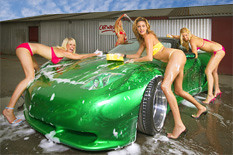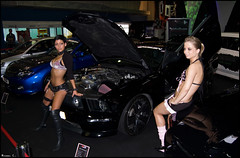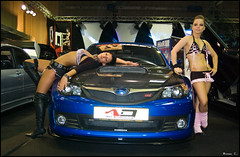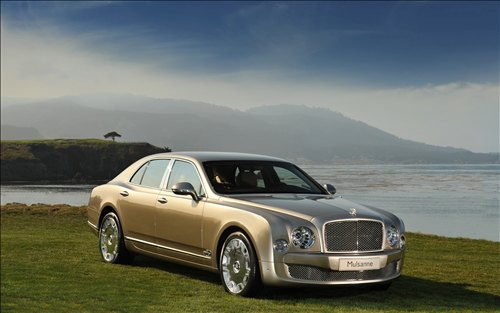Cute only goes so far. Fast and cute goes a lot farther (comments posted about girls you knew in college will be deleted upon reciept).
But fast and cute will cost you money, just like that girl in college (I'm invoking one-time editor/founder privilege).
This is the story of the Mini John Cooper Works Convertible. Its base price is $10,000 and change more than a base Mini Cooper Convertible, but that ten grand buys you the difference between 118 horsepower and 208....between a top speed of 123 and a top speed of 146...while giving up only 3 miles per gallon in both city and highway fuel economy (the EPA says 25 city/33 highway).
It also gets you a six-speed manual Getrag transmission, 17 inch alloy wheels with run-flat tires, and red Brembo front brake calipers. All of which covers going and stopping. And it handles like a slot car.
Inside, it's six-way adjustable sport seats with height adjustment, an on-boarad computer, a leather three-spoke steering wheel and the Sport button...which produces quicker throttle and steering response....neither of which was in short supply to begin with.
This is one of those cars that will put a grin on your face that will take days to go away.
No, $34,700 for a Mini convertible isn't cheap....nor is the $38,400 as-tested price (Mini threw in a cold weahter package, premium package with alarm, automatic air conditioning and chrome interior and exterior accents), Xenon headlights, custom paint, a Bluetooth and USB/iPod adapter (frankly, Mini's got....what's the German word for cojones?...charging $500 for that piece...which most automakers are including free of charge)...and white turn signal lights ($100? Really?) .
But find another convertible with this blend of speed, handling and fuel economy...and then find one anywhere near $38,400....much less $34,700.
A truly exciting car today...and, because it's likely to sell in smallish numbers, a collector's performance machine you'll be glad you kept years from now.



























































